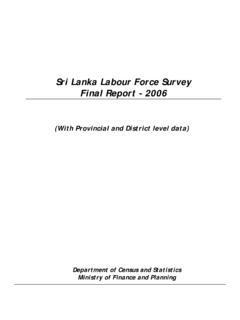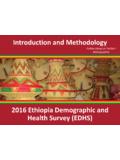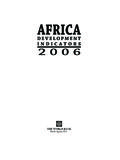Transcription of Household Income and Expenditure Survey 2016 - lisgis.net
1 1 Liberia Institute of Statistics & Geo-Information Services (LISGIS) Household Income and Expenditure Survey 2016 Statistical Abstract August 2017 i PREFACE & ACKNOWLEDGMENTS Since 1964, the implementation of a nationally representative Household Income and Expenditure Survey (HIES) has been a challenge due to financial and human capacity constraints. The calculation of accurate key indicators such as the Gross Domestic Product (GDP) and the Consumer Price Index (CPI) has been a complicated task because the available data was outdated and inadequate. The HIES 2016 provides new data for the update of the GDP, the consumption basket, the CPI weights, the population figures and the poverty estimates. Additionally, it will create a national accounts benchmark and a baseline for socio-economic indicators.
2 The Survey is nationally representative and it is designed to provide estimates not only at the national level, for both urban and rural areas, but also at the county level. The estimates of the HIES are needed for a well-informed national vision and an evidence-based development agenda, aiding in the formulation of policy and in the monitoring of the effects of the AfT-II and the newly launched Sustainable Development Goals (SDGs). The fact remains that the post-war socio-economic planning and development of our nation is a pressing concern of the government of Liberia and its development partners. Virtually every aspect of life in the country has become an emergency in resource allocation. It is therefore crucial that policy decisions are taken in a carefully planned and sequenced manner using adequate data.
3 Such policy-making and planning will elevate the development agenda for the betterment of the citizenry. The Liberia Institute of Statistics and Geo-Information Services (LISGIS) implemented and concluded the third Household Income and Expenditure Survey (HIES) in 2017. This Survey is the third after the HIES of 1964 and the partially completed HIES of 2014 (interrupted due to the Ebola Virus Disease). With an improved design, the Survey fieldwork was concluded on January 19, 2017. The HIES 2016 is the first Survey in Liberia that captures the seasonality of Household incomes and consumption patterns across twelve months. The original sample design for the HIES exploited two-phased clustered sampling methods, encompassing a nationally representative sample of households in every quarter and was obtained using the 2008 National Housing and Population Census sampling frame.
4 The questionnaires and Survey tools were all prepared in-house at LISGIS through extensive consultations with various stakeholders such as line ministries and agencies (LMA), donor organizations and NGOs. In 2016, amendments on the questionnaire were made based on the lessons learnt from the 2014 Survey . Training was conducted for almost a month in 2015 (December 1st to 28th). Specialised trainings in CS-PRO and ArcGIS were conducted for data entry and geographic information system (GIS) staff respectively. ii With the publication of this Statistical Abstract 2016 we celebrate a landmark in the progress of statistics in Liberia and in our pursuit towards transforming Liberia s development and planning strategy through the Agenda for Transformation (AfT) I and II. We, therefore, endorse that these end results be used for all development planning to obtain improved policy-making in favour of the people of Liberia.
5 The successful execution of the field data collection needed considerable human, material and financial resources. The efforts of LISGIS were accompanied by the generous support and cooperation received from various stakeholders which led to the successful completion of this one-year Survey . We recognize the efforts of those who provided relevant information. Specifically, the participant households for their tolerance, cooperation and devoted time spent with the field personnel during the numerous visits and interviews. The HIES 2016 would not have been a success without the involvement of national and international donors. Although the Government contributed considerable resources to this project, the requirements were beyond her capacity and it is with pleasure that we recognize the support of its partners including the World Bank, the United States Aid for International Development Agency (USAID), the European Union (EU), the Swedish International Development Corporation (SIDA) and the African Development Bank (AfDB).
6 We also acknowledge with gratitude the special assistance received, both technical and otherwise, from the World Bank throughout the project implementation and dissemination. Special gratitude goes to the employees of LISGIS for the level of cooperation received in many forms, particularly the Board of Directors, management and staff. Special thanks go to the HIES secretariat, the field staff, GIS specialists and data entry clerks for committing their services at all levels during the period of data collection and the public for their assistance. Additional appreciations go to the county authorities, as well as to traditional and community leaders for the multiple ways in which they provided assistance to the field teams to ensure the success of the fieldwork and data collection. We, the Liberia Institute of Statistics and Geo-Information Services express esteemed gratitude to all who assisted but were not captured in this acknowledgement, we salute and also recognize their contributions.
7 Please continue to work with LISGIS as we produce statistical information for strategic planning, policy and development. iii PREFACE & ACKNOWLEDGMENTS .. I LIST OF TABLES .. V LIST OF FIGURES .. VII LIST OF ACRONYMS AND ABBREVIATIONS .. VIII EXECUTIVE SUMMARY .. IX 1 BACKGROUND INFORMATION .. 1 STATISTICAL DEVELOPMENT IN LIBERIA .. 1 EBOLA VIRUS DISEASE OUTBREAK AND THE ONGOING IMPACTS ON THE HIES SAMPLE REPRESENTATIVENESS .. 4 2 DEMOGRAPHIC CHARACTERISTICS .. 7 POPULATION .. 7 Household SIZE .. 8 AGE GROUPS .. 10 3 POVERTY .. 13 POVERTY HEADCOUNT .. 14 FOOD POVERTY .. 15 EXTREME POVERTY .. 16 NUMBER OF POOR .. 17 POVERTY BY GENDER AND CHARACTERISTICS .. 18 POVERTY TRENDS ACROSS 2014 AND 2016 .. 19 INEQUALITY .. 21 CONSUMPTION.
8 22 4 FOOD SECURITY .. 30 ACCESS TO FOOD .. 30 FOOD INSECURE HOUSEHOLDS .. 31 5 HOUSING CHARACTERISTICS .. 33 OWNERSHIP STATUS .. 33 RENTAL COSTS .. 34 ELECTRICITY SOURCE .. 34 DWELLING STRUCTURE .. 35 SOURCE OF DRINKING WATER .. 36 GARBAGE DISPOSAL .. 37 6 EDUCATION .. 39 LITERACY RATE .. 39 FORMAL EDUCATION .. 40 HIGHEST EDUCATION ACHIEVED .. 41 EDUCATION PROVIDER .. 42 TIME TO SCHOOL .. 42 SOURCE OF BOOKS .. 43 Expenditure PER PUPIL .. 43 EBOLA RELATED DISRUPTIONS .. 44 7 HEALTH .. 46 iv PRIMARY HEALTH CARE VISITS AND HOSPITALISATIONS .. 46 PRIMARY HEALTH CARE PROVIDER .. 46 OVERNIGHT HOSPITALISATIONS .. 50 BIRTHS .. 51 8 EMPLOYMENT .. 55 INFORMAL EMPLOYMENT, VULNERABLE EMPLOYMENT, AND UNEMPLOYMENT.
9 55 PRIMARY EMPLOYER .. 58 SALARY STRUCTURE .. 59 9 Household NON-FARM ENTERPRISES .. 61 Household NON-FARM MANAGER CHARACTERISTICS .. 61 Household NON-FARM BUSINESS CHARACTERISTICS .. 62 PROFITABILITY OF Household NON-FARM BUSINESSES .. 63 10 AGRICULTURE/ CROP PRODUCTION AND LIVESTOCK .. 66 CHARACTERISTICS OF FARMING HOUSEHOLDS .. 66 FARM CHARACTERISTICS .. 67 USE OF MODERN INPUTS .. 69 LABOUR UTILIZATION .. 70 PRODUCTIVITY OF CROPS .. 72 LIVESTOCK .. 73 11 TRANSFERS .. 75 TRANSFERS RECEIVED .. 75 TRANSFERS SENT .. 77 12 SHOCKS .. 81 NUMBER OF SHOCKS ENDURED .. 81 DISTRIBUTION OF THE MOST SEVERE SHOCKS .. 81 13 SUBJECTIVE WELFARE .. 84 APPENDIX A - METHODOLOGICAL APPENDIX .. I A1. MEASURE OF WELL-BEING .. I A2. POVERTY DEFINITIONS AND POVERTY LINE.
10 VII A3. POVERTY MEASURES .. IX A4. COMPARABILITY WITH 2014 HIES AND 2007 CWIQ .. X APPENDIX B - QUESTIONNAIRES .. XII HIES QUESTIONNAIRES .. XII APPENDIX C - AGRICULTURE .. XV APPENDIX D PERSONS INVOLVED IN THE HIES 2016 .. XVII HIES 2016 PROJECT SECRETARIAT .. XVII PROJECT MANAGEMENT TEAM .. XVII RESIDENT ADVISORS AND CONSULTANTS .. XVII TASK LEADERS .. XVIII FIELD STAFF .. XVIII APPENDIX E REFERENCES .. XX v LIST OF TABLES Table : Region definitions by County .. 5 Table : Distribution of the Population of Liberia .. 8 Table : Distribution of Household Sizes in Liberia .. 9 Table : Distribution of population by age groups .. 10 Table : Poverty levels by geographic characteristics .. 16 Table : Total numbers of poor by geographic characteristics .. 17 Table : Poverty levels by characteristics of Household head.





